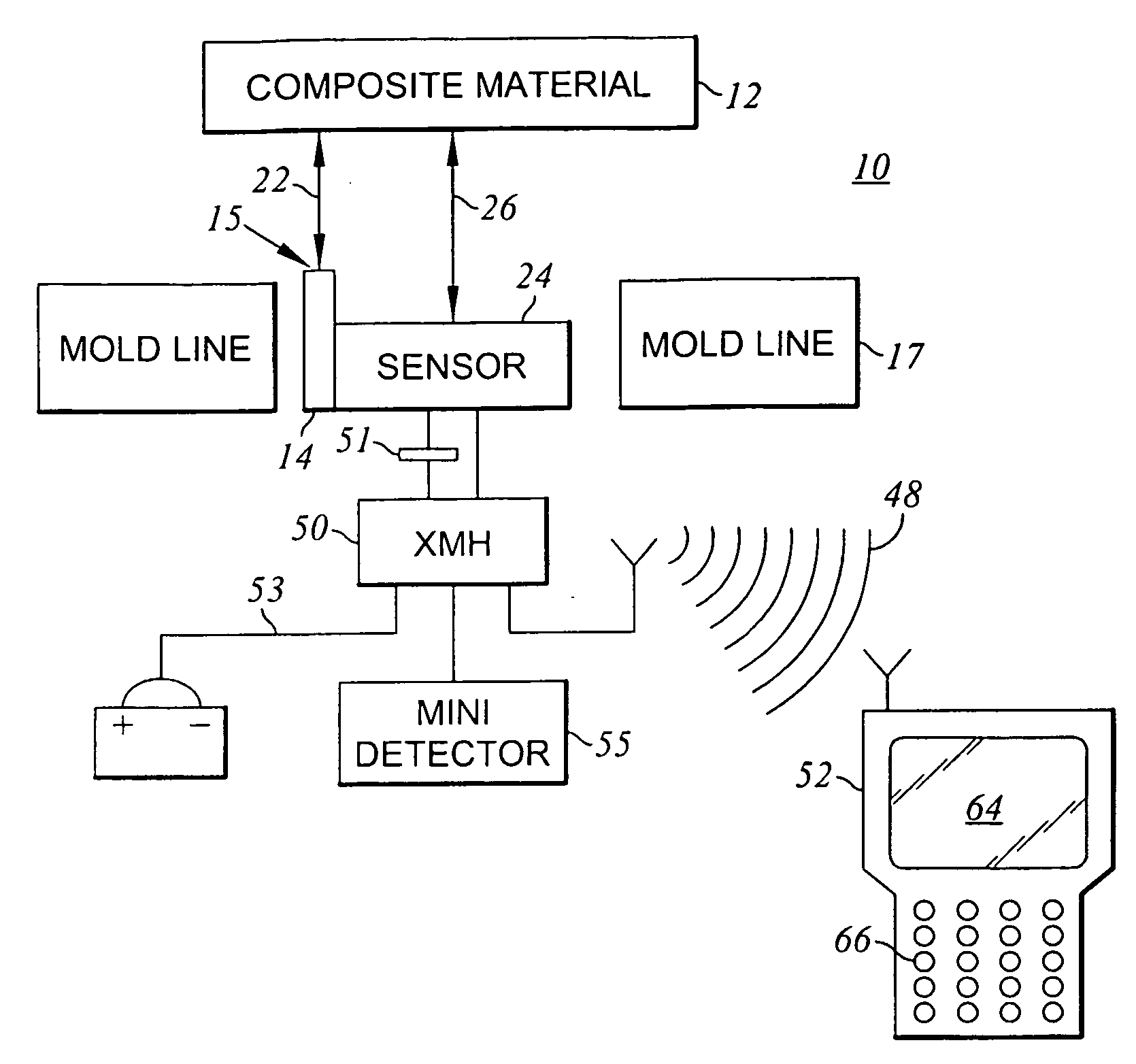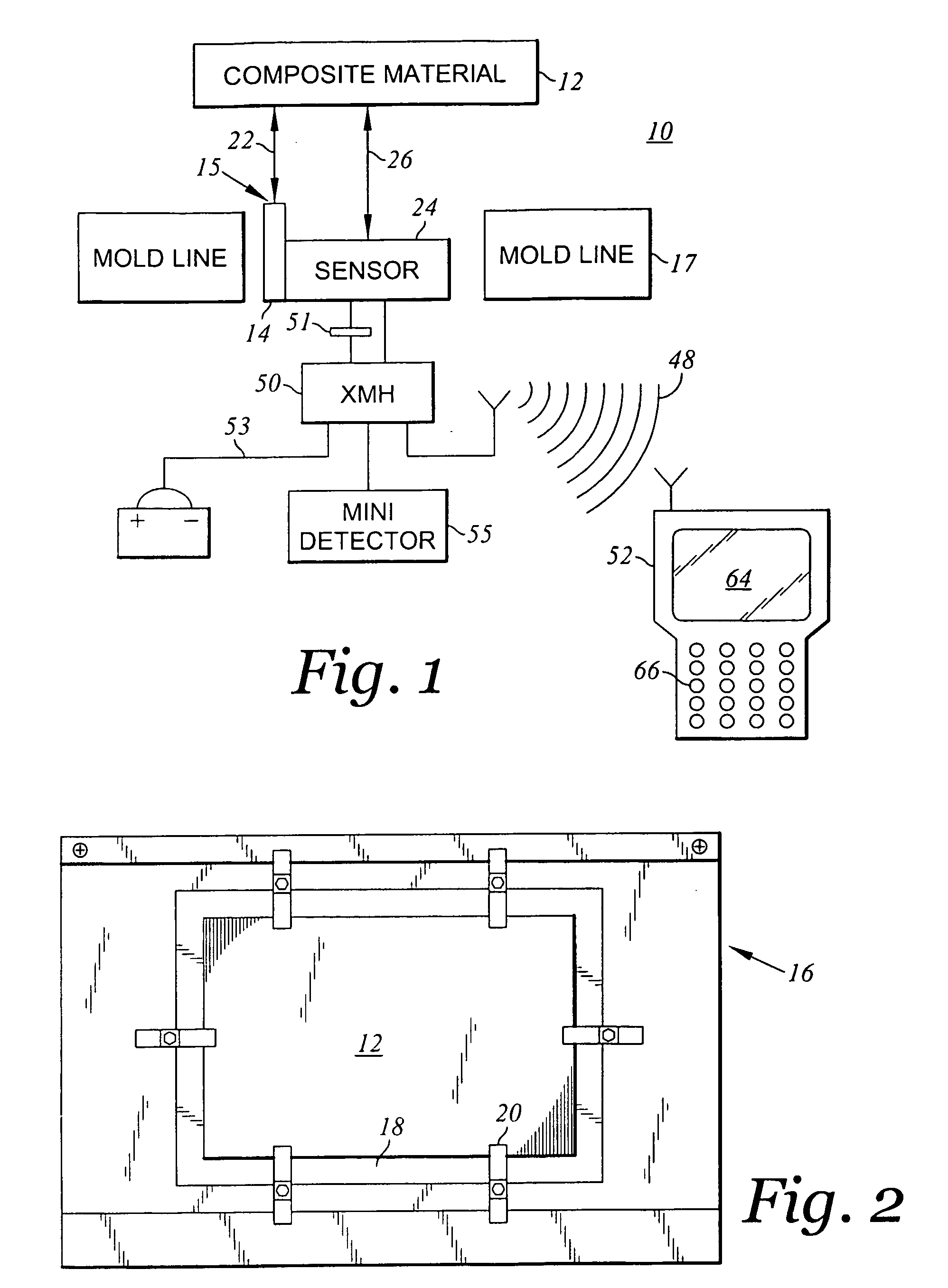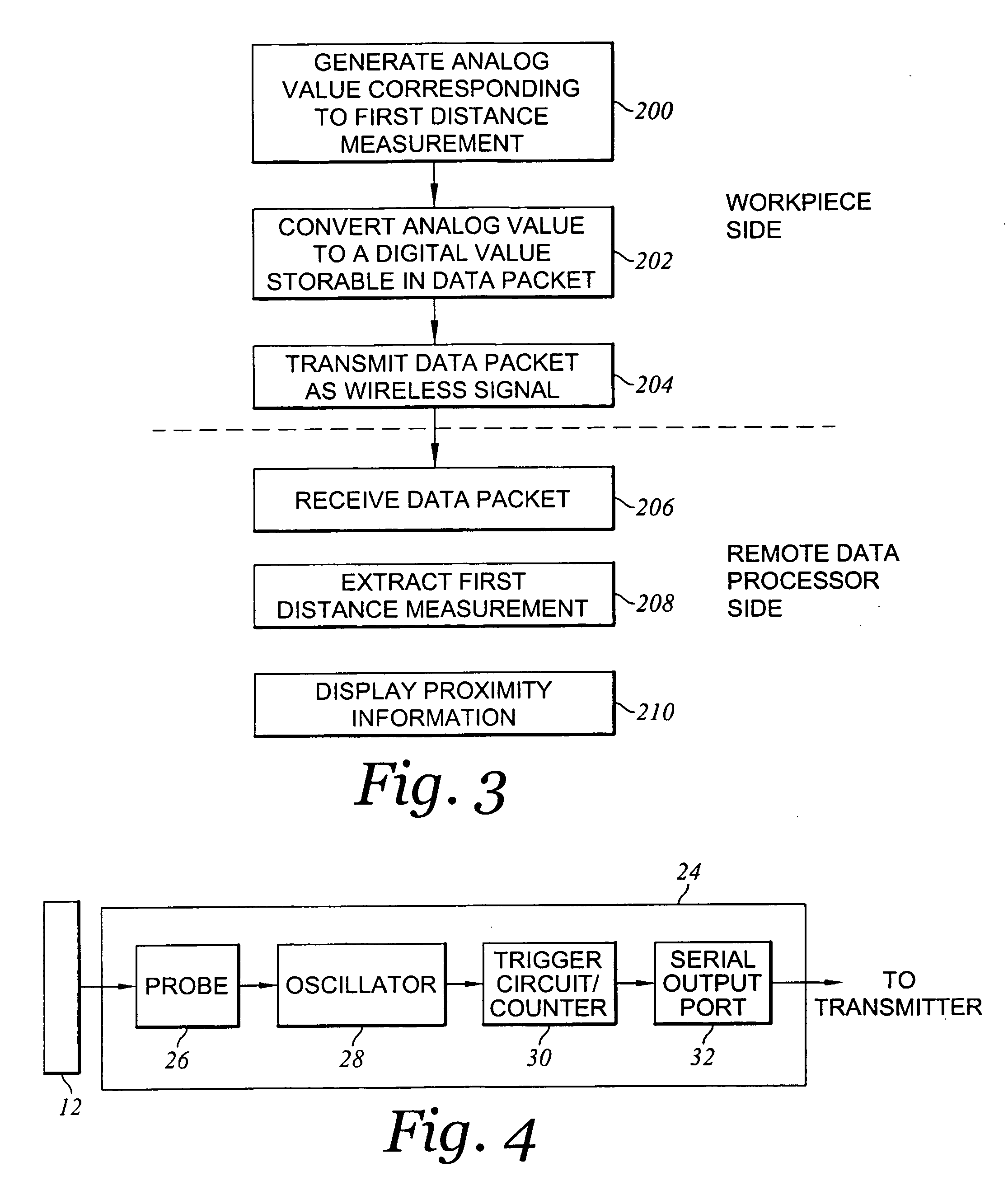Proximity sensing systems for manufacturing quality control
a technology of proximity sensing and manufacturing quality control, which is applied in the direction of program control, instruments, computing, etc., can solve the problems of affecting the manufacturability of materials, affecting the quality of materials, and difficult to maintain the alignment of machine tools, so as to increase manufacturing reliability and product throughput, and expand the scope of quality control
- Summary
- Abstract
- Description
- Claims
- Application Information
AI Technical Summary
Benefits of technology
Problems solved by technology
Method used
Image
Examples
Embodiment Construction
[0024]The detailed description set forth below in connection with the appended drawings is intended as a description of the presently preferred embodiment of the invention, and is not intended to represent the only form in which the present invention may be constructed or utilized. The description sets forth the functions of the invention in connection with the illustrated embodiment. It is to be understood, however, that the same or equivalent functions and may be accomplished by different embodiments that are also intended to be encompassed within the scope of the invention. It is further understood that the use of relational terms such as first and second and the like are used solely to distinguish one from another entity without necessarily requiring or implying any actual such relationship or order between such entities.
[0025]With reference to FIG. 1, according to one embodiment of the present invention, a manufacturing quality control system 10 monitors the proximity of a work...
PUM
 Login to View More
Login to View More Abstract
Description
Claims
Application Information
 Login to View More
Login to View More - R&D
- Intellectual Property
- Life Sciences
- Materials
- Tech Scout
- Unparalleled Data Quality
- Higher Quality Content
- 60% Fewer Hallucinations
Browse by: Latest US Patents, China's latest patents, Technical Efficacy Thesaurus, Application Domain, Technology Topic, Popular Technical Reports.
© 2025 PatSnap. All rights reserved.Legal|Privacy policy|Modern Slavery Act Transparency Statement|Sitemap|About US| Contact US: help@patsnap.com



